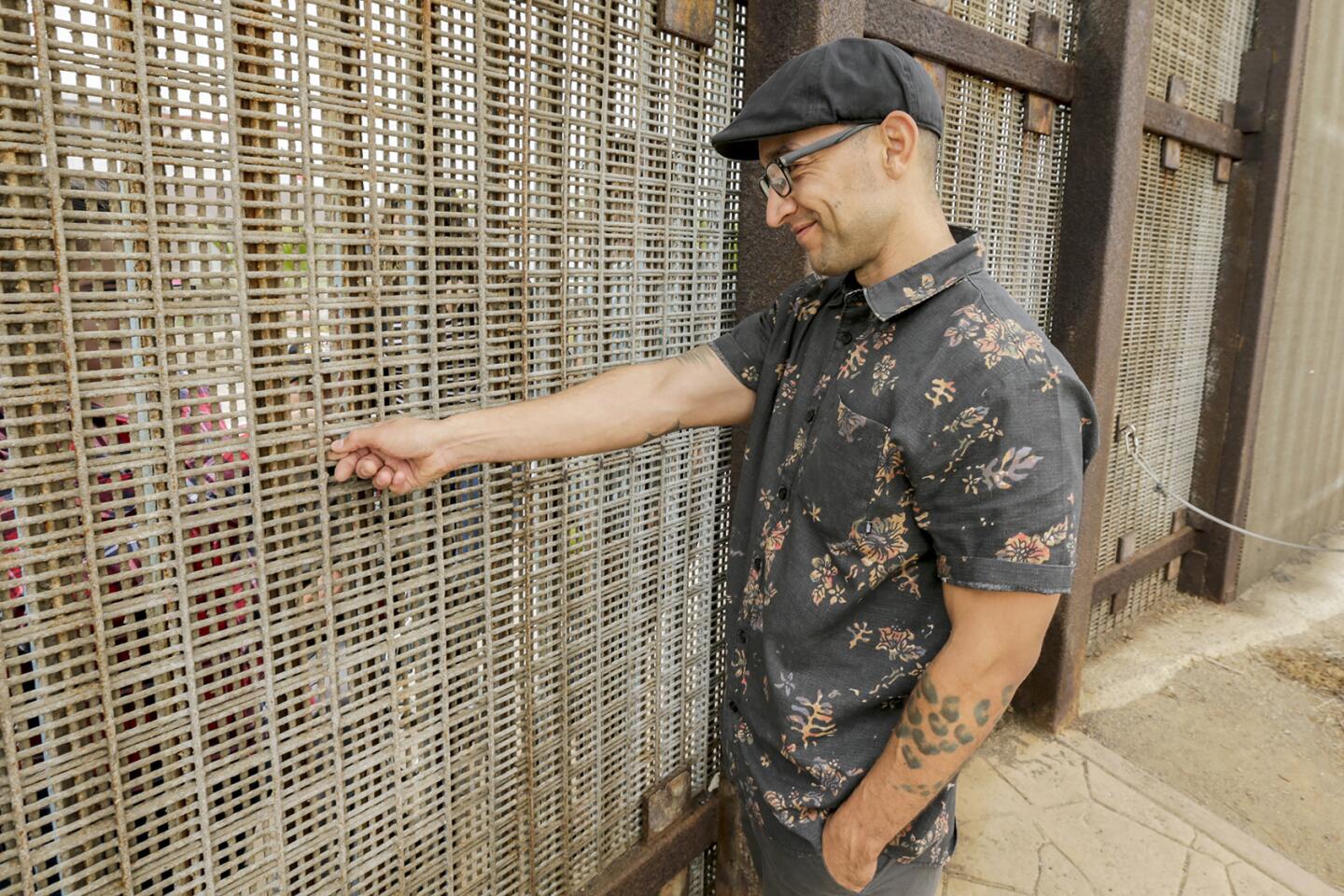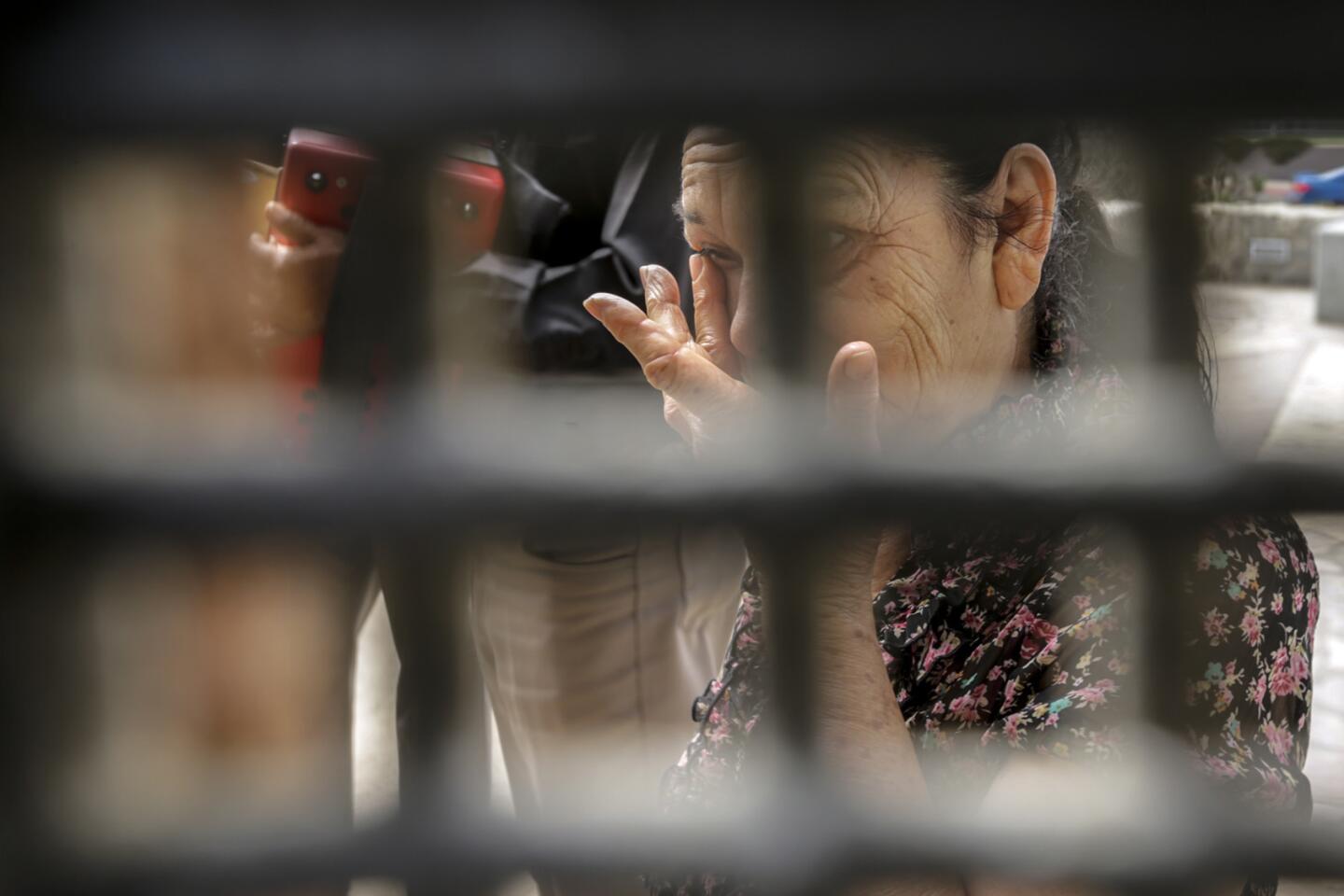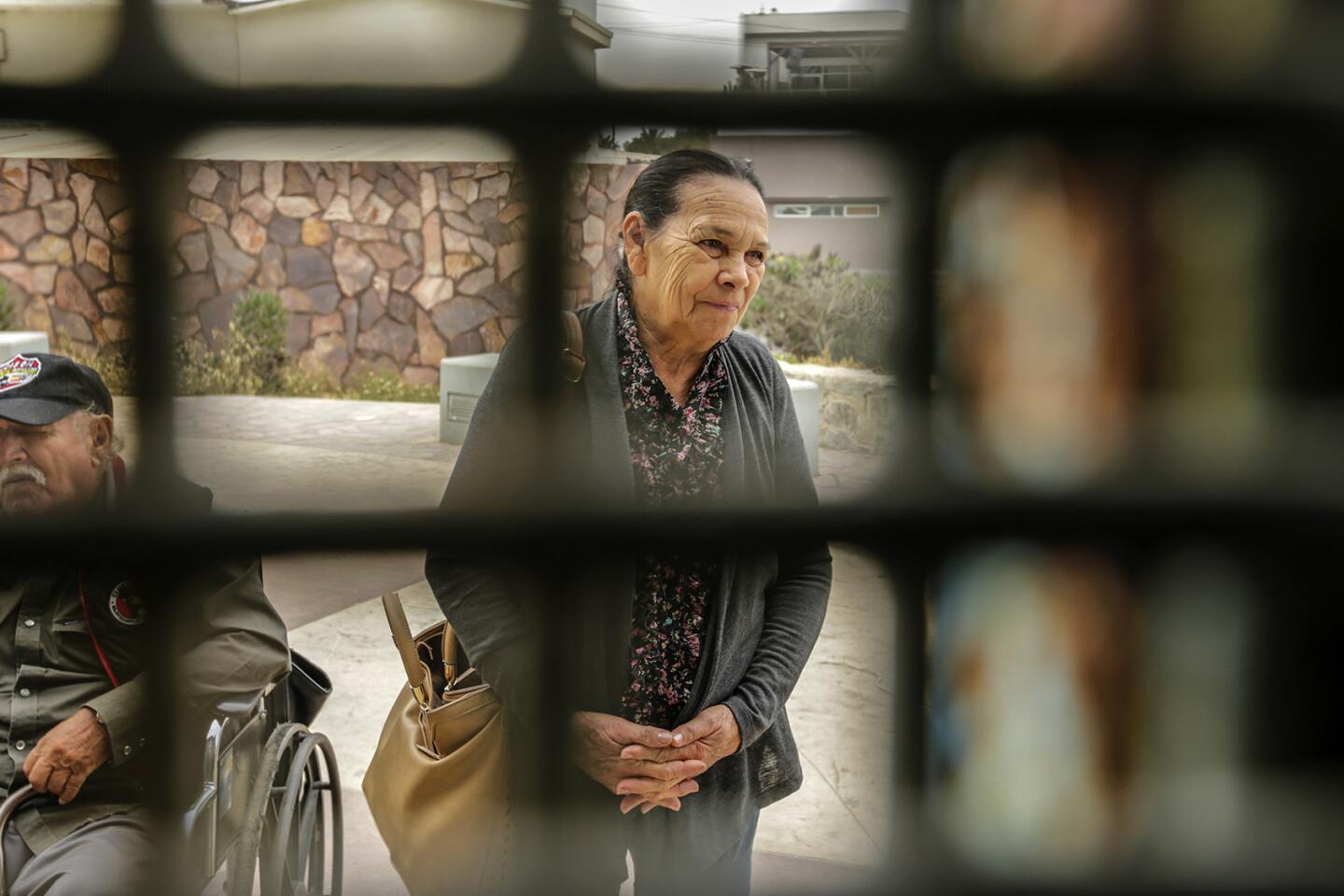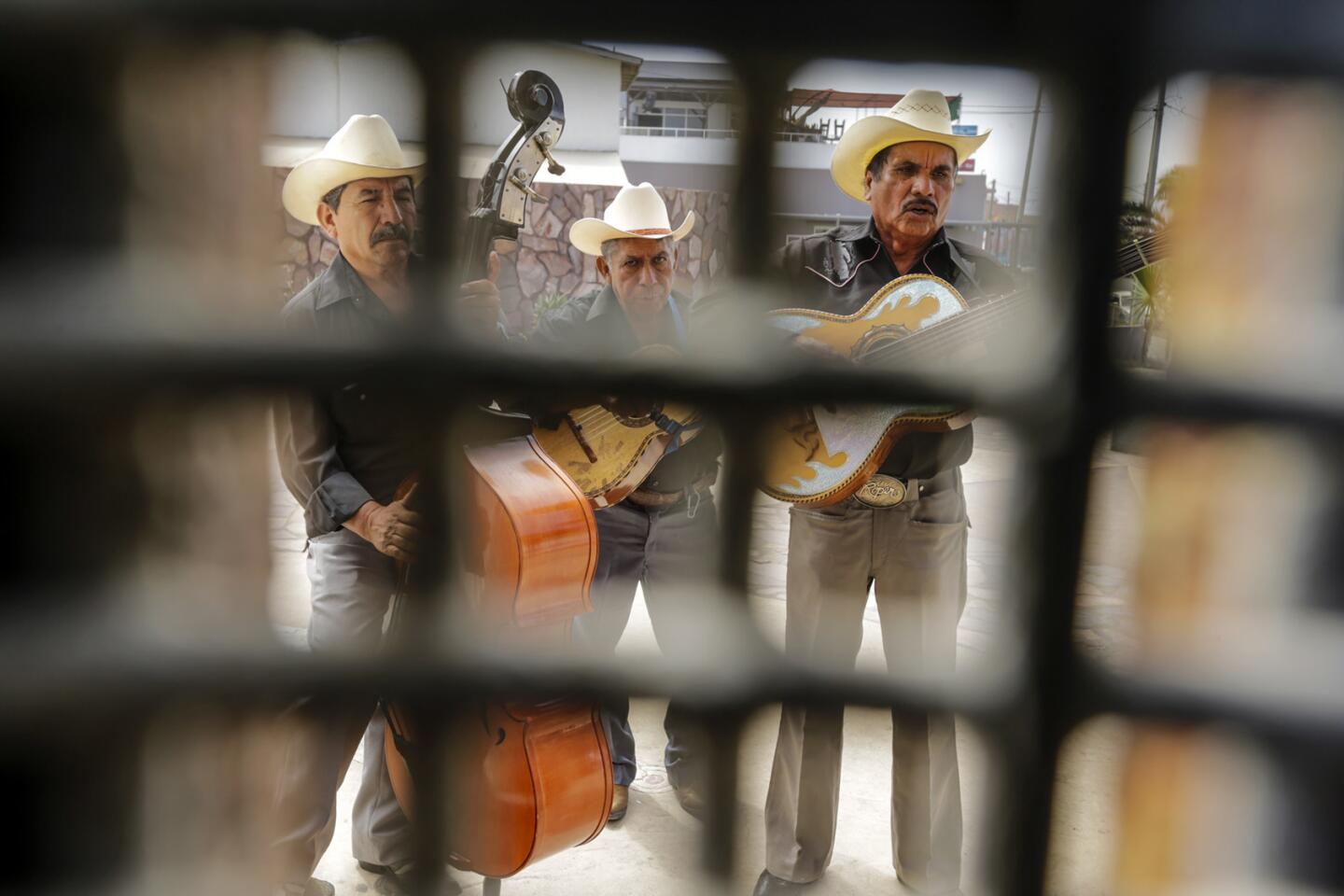This border fence has become a magnet for family reunions. Just don’t try to hug
Andres Gallegos Arguello stood on the American side of a metallic mesh fence in Friendship Circle between San Diego and Tijuana. His mother and father stood on the other side.
It was a family reunion under the close watch of the Border Patrol agents that serve as chaperones for every one of these meetings.
“How are you, my son?” Eva Arguello, 71, asked her son as tears welled in her eyes. “I really want to hug you.”
Around them the Pacific Ocean treated them to pretty vistas as Gallegos reached through the grid-like mesh and grazed his mother’s pinky finger.
“I’m just happy to see you,” he told her.
As the gate gains prominence in immigration circles, there is a new effort by some to make this stretch of border more accessible. The Let Them Hug petition asks that the Border Patrol let people get together in a spot where they can hug and kiss if they want to.
The fence has been an unlikely meeting place during weekends for countless families divided by immigration policy. Parents and children, husbands and wives, lovers, friends and hikers curious about the border and a fence that has the contours of Chex cereal. Every week hundreds make the pilgrimage there, some traveling from as far east as New Jersey or south as Chiapas.
For those for whom crossing into Mexico or the U.S. is a fraught affair with no guaranteed return, the fence is the best they can do when they want to see people they love face to face.
Every four months, Noemi Medrano leaves her home in Sacramento to meet her mother, Carmen Urrea, 60, who travels from Sinaloa. Daughter and mother said they have not shared a hug in six years.
Earlier this year, when Medrano — who is temporarily protected from deportation as long as she doesn’t leave the U.S. — told her mother that she was pregnant, they touched fingers through the metal mesh. Medrano said she would return next year and present her infant son through the fence.
The idea of making this span of border less restrictive is one that the Border Patrol opposes. Richard E. Smith, assistant chief for the Border Patrol in San Diego, said the agency opposes the idea, calling it “a vulnerability and level of risk to national security that are not acceptable at this time.”
A Border Patrol agent watching over the visitors said that the strangely configured mesh on the fence was designed, in part, to make it harder for contraband to cross the border.
A generation ago the border was a different threshold, easier to cross both legally and illegally. Located atop Monument Mesa, Friendship Circle is inside Border Field State Park. People have gathered there since the U.S.-Mexico Boundary Commission first met at the location in 1849, at the end of the U.S.-Mexico War. In 1971, then-First Lady Pat Nixon helped to dedicate the park, crossing through a hole freshly cut in what was then a barbed wire fence to meet and hug Mexican children.
“I hope there won’t be a fence here too long,” she said.
When it’s about national security, they don’t care about the feelings of the ordinary people.
— Andres Gallegos Arguello
The metallic mesh — which prevents people on each side from touching — was installed on the fence at Friendship Circle in 2011 as a security measure.
“Until the 1990s, it was relatively easy for folks in Mexico to come to the U.S. and folks in the U.S. to go into Mexico,” said Louis DeSipio, a professor of political science at UC Irvine. “Creating this new arbitrary situation of ‘You can touch right here but not there’ is a new development in the long history for the U.S. southern border.”
DeSipio said “the Border Patrol is in a very difficult situation. They are getting pressure from the right to seal the border in some absolute sense and pressure from the left to recognize the humanitarian implications.”
The ability to embrace loved ones is the top desire shared by people who visit the park for these reunions, said Friends of Friendship Park organizer John Fanestil, a Methodist reverend who gives a weekly service of communion at the U.S.-Mexico border.
He said he and his coalition have spent tens of thousands of hours at the park without ever experiencing any danger or violence.
Every April a handful of families are allowed to hug in a highly staged media event, Fanestil said. Coordinating with an immigrant advocacy group, the San Diego Border Patrol opens a gate on the massive border fence, allowing children and parents to reunite for just a few minutes with their relatives on the Mexican side.
The Border Patrol opens a gate to the mesh covered fence area during weekends and allows no more than 25 people at a time to gather there.
They get together between the metal mesh. Border Patrol officials said they are working hard to accommodate the families who gather at the park but said there are simply too many security issues to allow fewer restrictions.
The fact that the park is so popular with “families and visitors is a testament to the hard work of the men and women of the Border Patrol over the past two decades,” Smith said.
Not everyone gathered at the Mexican side of the fence is Mexican.
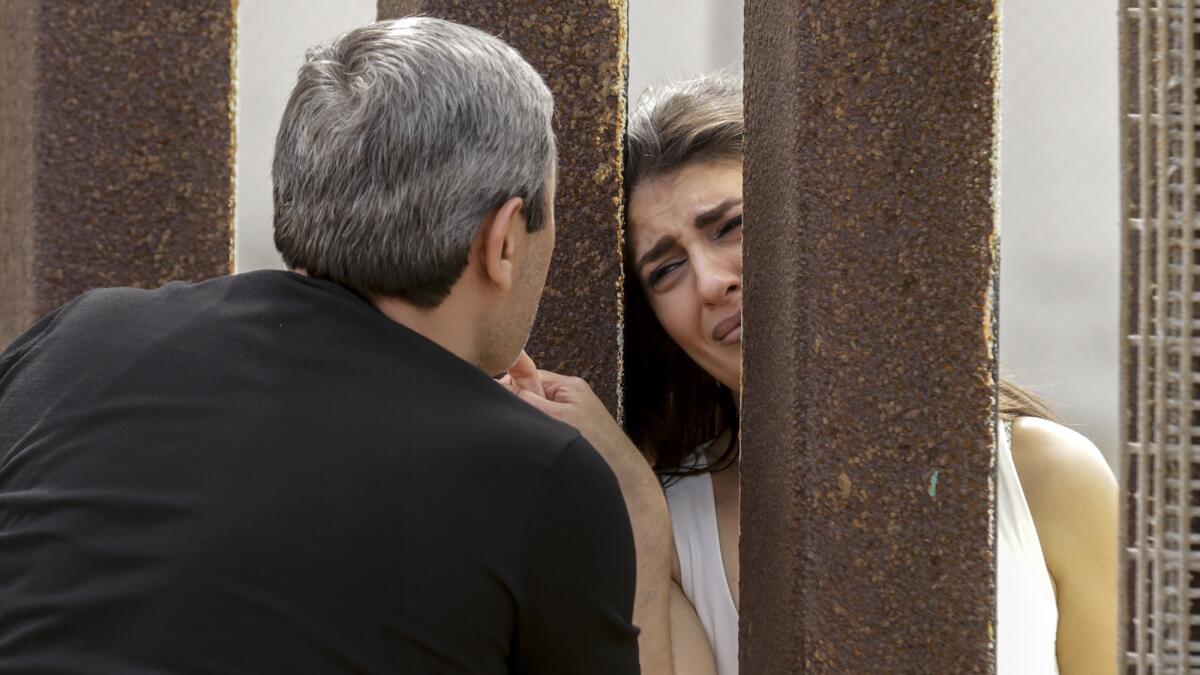
On a recent Saturday, an Armenian man, Arcen Avagyan, 42, and his wife reunited through the fence. They had not seen each other in three years. Standing in Tijuana, Anna Sargisyan, 28, hoped to ask for asylum at the Port of Entry. Divided by the metallic fence, the couple puckered their lips as they attempted a kiss through a too-small hole.
Moments later, Avagyan jumped over a rope and made his way to an area where he could steal a hug and a proper kiss from his wife. A Border Patrol agent quickly ran toward them and reprimanded him, ordering Avagyan to stay in the cordoned area.
Nearby, Gallegos and his 10-year-old son, Saiid, visited the boy’s grandparents.
Gallegos is in the process of becoming a legal resident but can’t leave the U.S. without risking his return. A month ago, he visited with his mother and father, Andres Gallegos Saenz, 76, at the park after not having set eyes on them in more than two years.
Spotting four musicians — one carrying an accordion, two guitars and one a cello — nearby, Gallegos’ father hired them to play Mexican songs for his son, including one about the love of a parent for a son.
Getting up from his wheelchair and leaning on his cane, Gallegos’ father got close to the fence.
“At least I can see him,” he said of his son.
Despite the heartache of feeling so close yet so far, Gallegos said he understood the Border Patrol’s point of view.
“When it’s about national security, they don’t care about the feelings of the ordinary people,” he said.
Though he expressed being content, for the moment, with being able to see his parents, when Gallegos saw the Armenian couple’s bold attempt at closer physical contact he felt he had to do something.
Slowly, he crept up to a rope away from the grate-like fence. When Gallegos felt the agents were sufficiently distracted, he took a leap into the prohibited area, where only giant, rusted iron bars block the way.
In a few seconds, he hugged his mother and father and planted kisses on their cheeks. Then, with a grin on his face, he hopped back.
Follow Cindy Carcamo on Twitter @thecindycarcamo
ALSO
What does being Latino mean to you?
Nearly half a million U.S. citizens are enrolled in Mexican schools. Many of them are struggling
More to Read
Start your day right
Sign up for Essential California for news, features and recommendations from the L.A. Times and beyond in your inbox six days a week.
You may occasionally receive promotional content from the Los Angeles Times.
